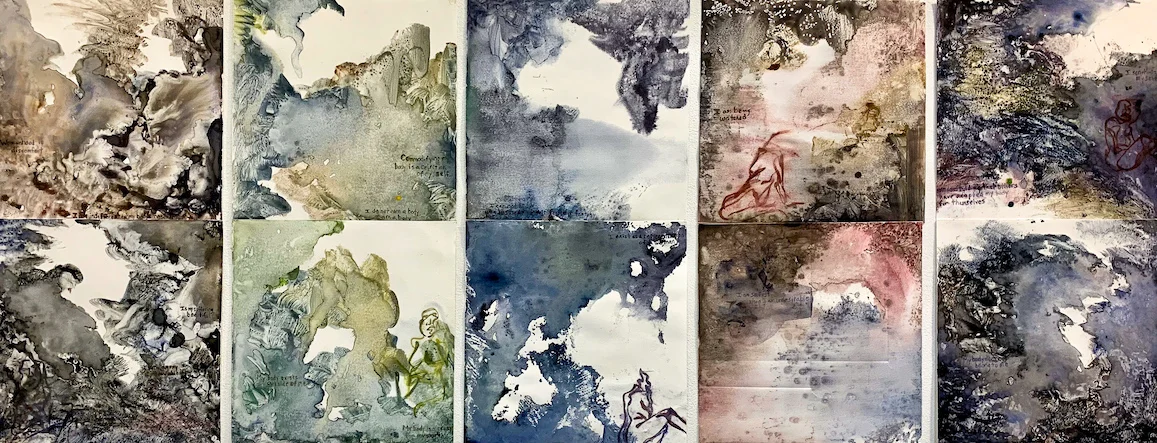Statement
My artistic process synthesizes the act of artmaking with my clinical therapy practice. Within both disciplines, I predominantly explore the impact of traumatic events on individuals, and highlight embodied experiences of violence. Psychological trauma–personal and collective–occurs when the brain undergoes periods of extreme stress. Although trauma manifests itself in a variety of ways, I primarily focus my art on dissociative effects of trauma, and, more specifically, on the detachment traumatized individuals feel from their bodies. “Dissociation” describes a fracture in what are typically automatic, integrated aspects of personal functioning (e.g. identity, memory, consciousness, perception, thoughts, emotion). Consequently, dissociative states often produce a sense of being separated from one’s body, understood as an inability to recognize or connect to it. This alienation is accompanied by the sensation of belonging to someone other than oneself. I examine this phenomenon in Premonition (2017) and Moments of Clarity (2018); I develop abstracted forms from blind contour drawings of live figure models to act as representations of estrangement from one’s body. The illustrated figures, standing alone in space, mirror the liminal nature of trauma.
My artwork also serves as an investigation of the universality of trauma. Political repression induces widespread trauma so that it acts as a structural force; we are pierced by the violence permeating our society. I build confrontational installations that are informed by extensive research and utilize others’ voices in order to give a platform to suffering, as well as illuminate oppressive systems that normally function invisibly. I typically make use of labor-intensive mediums, such as screen printing and embroidery, to emphasize the care given to translating experiences of trauma. It is a method of stating, “I notice you, and I am dedicating this space to you.” During a recent visit to Italy, I found myself troubled by the number of Renaissance artworks commemorating Lucretia, a legendary noblewoman whose rape and subsequent suicide triggered a revolt against a tyrannical monarchy and led to the creation of the Roman Republic. She Was Not Victorious, She’s Just Dead (2018) critiques how popular interpretations of Lucretia’s suicide as a triumph obscure her pain and ultimately fail contemporary victims of sexual violence. By utilizing testimonies gathered from victims of sexual abuse, I intend to frame Lucretia’s experience as a shared experience of women: our suffering is rarely acknowledged as our own before it is appropriated for another’s benefit.
I have begun further tackling this concept of collective trauma as it relates to womanhood in a collection of prints entitled, We Are Not Meant to Be Comfortable (2019) and Incongruence (2019), which examine the contentious relationship women have with their bodies. Although I include personal reflections in my work, I likewise draw on literature by women who have written about how the relationships they have with their own bodies are dictated by patriarchal measures under capitalism. In order to be considered fully human, we must appear sexually viable to men by meeting an unattainable ideal centered around patriarchal dominance and control. The “feminine body” is constructed, and thus, a self-surveilling subject is established. In pursuit of this body, our own bodies become adversaries, causing us to dissociate from them. The liminal space of trauma featured in Premonition reappears as a scene of conflict, with abstracted figures engulfed in ambiguously chaotic spaces. The submerged text echoes various manners in which I have noticed my body exists for others rather than for myself, thereby compelling me to view my body through their eyes as a commodified entity alienated from my being.





